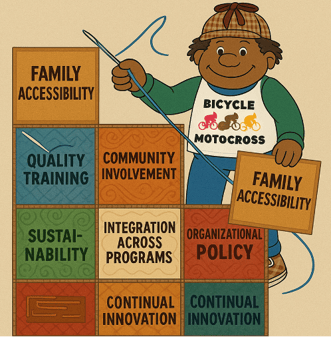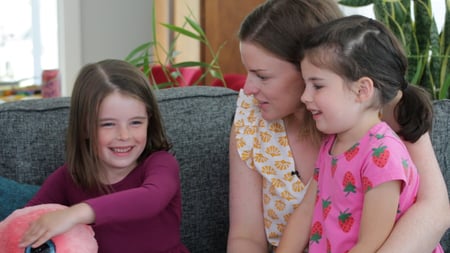Leading Effective Parent Training with Proven Family Engagement Strategies

Check out our blog for social-emotional learning articles, news, and more!
Set up Frequent Role Plays or Practices in Group
Setting up numerous role plays or practices for parents is critical to parents’ learning processes. From the discussion, you may think that parents understand the principle or topic, but when you see them practice “in action” you will have a better idea of their ability to put their ideas into real-life behaviors. There can be a discrepancy between how parents cognitively would like to behave and how they actually behave. It can be very difficult to think of the right words to use with children and manage angry thoughts and stressful feelings when children argue or disagree, or to follow through with consistent responses. Role play practices help parents to rehearse their behavior strategies, practice staying calm and using positive self-talk, and to get feedback from group leaders and other parents about their skills. Here are some tips for successful role plays.
Plan your role plays: We have a new editable handout to help you plan your role play practices! Download Group Leaders Setting Up Role Play Practices (editable)
Setting up a Large Group Role Play Practice: Most of the time, practice should first be done in the large group so that you can scaffold and support the practice. Then parents can move into small groups to practice what they saw modeled in the large group practice. When this is not done, parents often get confused about what they are supposed to be doing. First, remember you are the “director” of the role play and get to choose the actors, set the stage, and determine the script and roles for the things you want practiced. Always make sure that you have covered the content prior to doing the role play. Then start with a simple role play that will illustrate the concept and achieve your learning objective for the practice.
Rather than ask for volunteers, select a parent you think understands the behavioral concept and can successfully play the role of the parent. Invite the parent to help you, e.g., “John, would you come up and help me by being the parent in this next role play.” Then choose a parent to be child. “Sally, will you be your child who is fearful and afraid to take risks?” Parents, rather than group leaders, should be the role play participants. Parents will learn more from being in the practices themselves. If you are in the role play, you will not be able to effectively scaffold or debrief the process.
Set the scene and build a script: Set up the role play by letting participants know the age of the child, developmental level and temperament of child, and what the child and parent will do. First, ask the group for ideas for how the parent should respond to the particular situation being set up. For example, “So in this practice, our parent is going to be practicing persistence coaching and Seth is going to be the child who is inattentive and wiggly and has difficulty staying on task. Our parent is going to use persistence coaching. What words can she use for what behaviors?” Using the parents’ suggestions, walk the parent through their part in the role play before the role play starts. Give instructions to the child, letting them know whether they should be cooperative or noncompliant. If they will be noncompliant, let them know if there are any limits (e.g., you should fuss and whine, but please don’t throw things or hit). This is very important because you don’t want the role play to require management techniques that haven’t been taught yet.
Supporting the practice: Both the leader and co-leader can serve as coaches for the role play. Often one leader supports the role of the parent and the other supports the role of the child. As the role play proceeds, freeze the scene at any time to give the parent feedback for her effective skills, or to redirect, or to clarify something you didn’t explain well. Provide the parent role with plenty of scaffolding so they can be successful. Group members can also be asked to suggest ideas if the actor participant is stuck.
Defining the practice: Always debrief each role play. It can be helpful to start by asking for positive feedback from the group about the parent’s effective skills: “What did you see Thomas doing well? Or: “What principles of ignoring did Maria use?” Also debrief with the person playing child and playing parent afterwards to find out how they felt during the practice. When applicable rerun the role play with a different response using the ideas of another parent. Sometimes you may want the person playing “child” to try the scene being in role as “parent” so they can experience practice with this different approach.
Ideas for spontaneous role plays: There are many role plays or practices suggested in the leader’s manual. However, try also to use spontaneous role plays that emerge out of a discussion of a difficulty a particular parent is having at home and is asking for help with. When parents feel you are directing these practices at their own real issues with their children at home, they are very grateful for this support and understanding. Sometimes a parent will begin to enthusiastically describe a success they have had with their child. These are perfect opportunities for the group leader to ask, “Can you show us what you did? It would be helpful to see it in action and help us learn from your experience.”
Caution: Never set up a spontaneous role play that deals with a topic that the parents have not yet covered in the program. So, if in an early session, a parent brings up a misbehavior, you would not set up a role play that involves discipline. You might set up a role play that helped the parent think about how to use the social coaching or praise for the positive opposite behaviors. It would be important to coach the child in the role play to be responsive to the coaching and praise and not to misbehave. Then reassure the parent that in future sessions you will cover what to do if the child still misbehaves.
When doing these role plays, it is helpful if one leader is sitting next to the parent in role as parent and the other leader next to the child. In this way, the leader can whisper to the parent suggestions for words to use if they need help and the other leader can make sure the parent in role as child is exhibiting behaviors than can be praised or attended to or safely ignored. Providing this scaffolding for practice sessions will make the practice more successful, useful and supportive.
Download these Hot Tips for Group Leaders Setting Up Role Play Practices
Join IY Program Developer Carolyn Webster-Stratton for her webinar:
Implementing Online the Incredible Years Way
Date: Wednesday, April 14th, 2021 9:00am – 11:00am PST
Venue: Online (Zoom)
Led by: Carolyn Webster-Stratton, PhD
Cost: $200 per person
Contact: incredibleyears@incredibleyears.com




